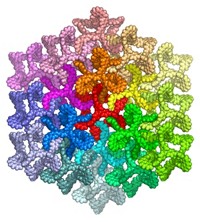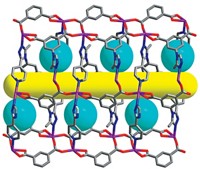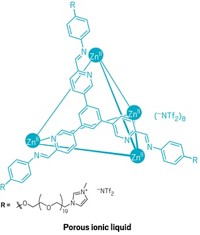Advertisement
Grab your lab coat. Let's get started
Welcome!
Welcome!
Create an account below to get 6 C&EN articles per month, receive newsletters and more - all free.
It seems this is your first time logging in online. Please enter the following information to continue.
As an ACS member you automatically get access to this site. All we need is few more details to create your reading experience.
Not you? Sign in with a different account.
Not you? Sign in with a different account.
ERROR 1
ERROR 1
ERROR 2
ERROR 2
ERROR 2
ERROR 2
ERROR 2
Password and Confirm password must match.
If you have an ACS member number, please enter it here so we can link this account to your membership. (optional)
ERROR 2
ACS values your privacy. By submitting your information, you are gaining access to C&EN and subscribing to our weekly newsletter. We use the information you provide to make your reading experience better, and we will never sell your data to third party members.
Materials
Sorting Molecules By Shape
Chemical separation shown with molecular organic cages instead of zeolites
by Sarah Everts
January 21, 2013
| A version of this story appeared in
Volume 91, Issue 3
Petroleum is rich in valuable aromatic compounds, but separating them by distillation is costly because of the compounds’ high boiling points. Porous solids are potential separation tools, but so far zeolites and metal-organic frameworks have not worked well for aromatic molecules containing more than eight carbons. Using a strategy based on shape mimicry, researchers led by Andrew I. Cooper at the University of Liverpool, in England, have now shown separation of large aromatics by purely organic frameworks (Nat. Chem., DOI: 10.1038/nchem.1550). They constructed frameworks from building blocks that are structurally similar to the molecule they aim to extract. In a proof-of-principle study, they built a framework with mesitylene-like building blocks to separate mesitylene from its structural isomer, 4-ethyltoluene. They find that mesitylene gets stuck trying to pass through the framework, while 4-ethyltoluene passes through. The trick, Cooper says, is building frameworks with enough flexibility to allow some molecules to pass through but not so flexible that everything can. He hopes the strategy can be extended to separation of other large organic molecules.





Join the conversation
Contact the reporter
Submit a Letter to the Editor for publication
Engage with us on Twitter